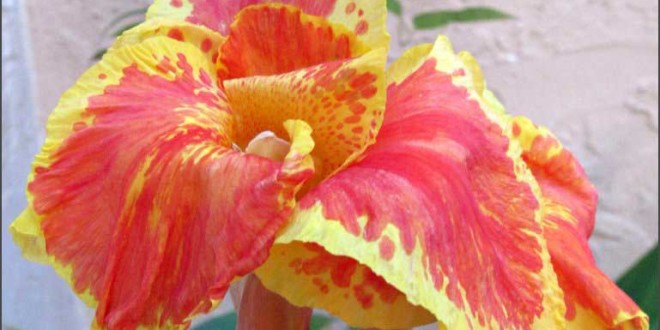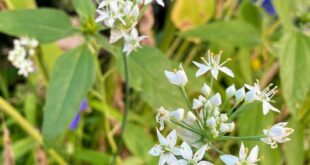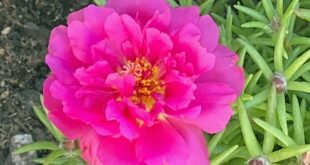The canna lily plant is a rhizomatous perennial with tropical-like foliage and large flowers that resemble that of iris. Canna lilies are low maintenance and easy to grow, and both their flowers and foliage offer long-lasting color in the garden. Flower color may be red, orange or yellow. Depending on the variety, foliage color varies from green to maroon, bronze, and variegated types. Let’s look at how to plant canna lilies and tips for growing cannas.
Growing Cannas
While typically grown as annuals in cooler regions, given the proper conditions, canna lilies can color the garden year after year. They like plenty of heat, so place them in full sun. They can also tolerate partial shade.
Cannas like moist conditions too, but will tolerate nearly any well-draining soil that is either neutral or slightly acidic. They appreciate bog-like conditions as well. The soil should also be rich in organic matter.
When growing cannas in the garden, placing them in mixed borders or group plantings will offer the most dramatic effect.
How to Plant Canna Lilies
Cannas can be planted outdoors in warm climates or containers in other areas. During spring, when planting of canna lily plant, wait until the threat of frost has passed. Groups of cannas should be planted about a foot or two apart.
While technically they don’t have a top or bottom, most canna rhizomes can be planted horizontally with the eyes facing up. Cover the rhizomes with 3 to 6 inches of soil. Water well and apply a layer of mulch to retain moisture.
Canna Lily Care
Once established, cannas need to be kept moist. They also require monthly fertilizer that is relatively higher in phosphate for continual bloom. It’s usually necessary to dig up and store canna rhizomes in the fall.
They can also be overwintered in pots and allowed to grow throughout the winter season. In spring they can be replanted or moved back outdoors. You can also divide the plant during this time if necessary. Plant 3 inches deep.








